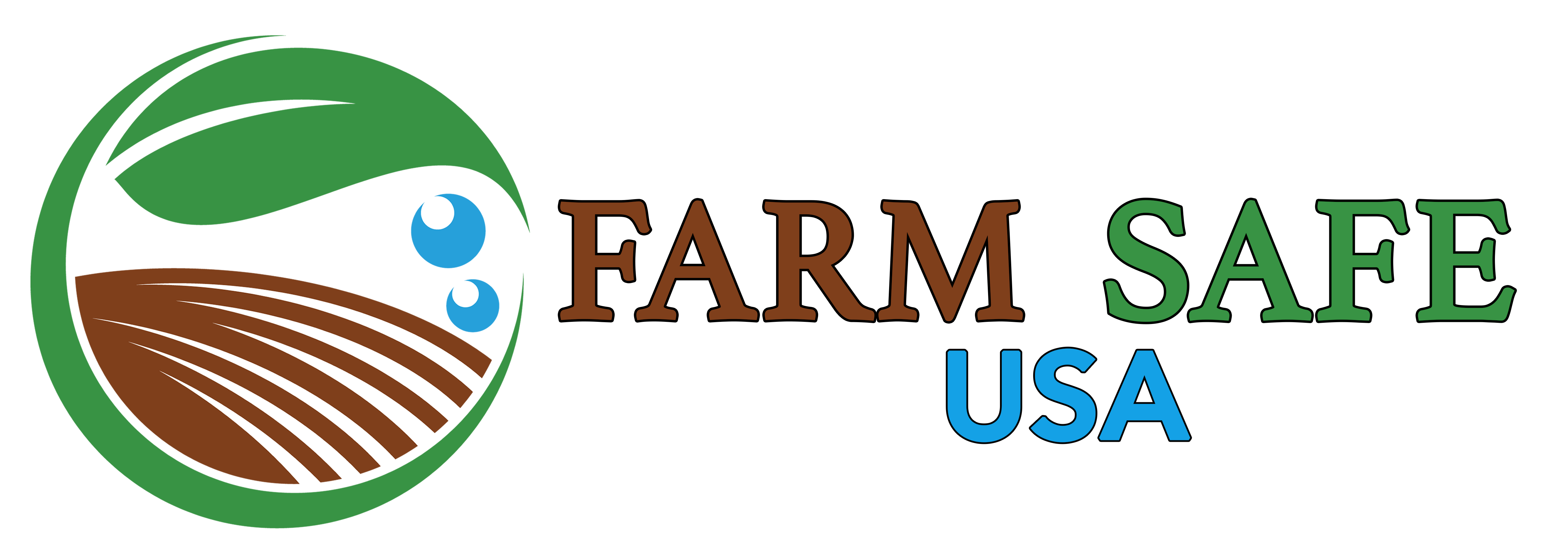Here is a summary of the Food Safety Modernization Act – Produce Safety Rule
Standards for the Growing, Harvesting, Packing, and Holding of Produce for Human Consumption

The FDA Food Safety Modernization Act (FSMA) Produce Safety rule was published on November 27, 2015. The rule establishes science-based minimum standards for the safe growing, harvesting, packing, and holding of fruits and vegetables grown for human consumption. Information about the rule and the implementation of the rule can be found on the FDA web site.
All farmers who grow, harvest or pack raw produce and sell more than $25,000/year in produce sales may be covered under the rule. Some growers may be eligible for an exemption based on:
- Commodities grown (produce rarely consumed raw)
- Processing activities that include a “kill step” (canning, refining, etc.)
- Annual produce sales (less than $25,000)
- Average annual food sales and sales to “qualified end users”
For farms who grow produce:
For farms who grow covered produce, the FDA has created three categories based on average annual produce sales (based on a rolling average, over a 3-year period), with different compliance dates for each category. See updated compliance dates here.
FDA business category | Gross annual produce sales | FDA compliance date for covered produce | Anticipated start for on-farm Inspections
All Other Businesses | Over $500,000 | January 26, 2018 | Growing Season 2019
Small Businesses | $250,000 – $500,000 | January 28, 2019 | Growing Season 2020
Very Small Businesses | $25,000 – $250,000 | January 27, 2020 | Growing Season 2021
What is ‘covered produce’?
Basically, if you grow anything on this list, you need to comply with the Produce Safety Rule and all the requirements it contains. The simple way to comply and have your paperwork, procedures and records done easily and organized is to use our Produce Safety Plan.
Farm Safe USA

FDA has a NON-exhaustive list of covered produce, which includes:
Almonds, apples, apricots, apriums, Artichokes-globe-type, Asian pears, avocados, babacos, bananas, Belgian endive, blackberries, blueberries, boysenberries, brazil nuts, broad beans, broccoli, Brussels sprouts, burdock, cabbages, Chinese cabbages (Bok Choy, mustard, and Napa), cantaloupes, carambolas, carrots, cauliflower, celeriac, celery, chayote fruit, cherries (sweet), chestnuts, chicory (roots and tops), citrus (such as clementine, grapefruit, lemons, limes, mandarin, oranges, tangerines, tangors, and uniq fruit), cowpea beans, cress-garden, cucumbers, curly endive, currants, dandelion leaves, fennel-Florence, garlic, genip, gooseberries, grapes, green beans, guavas, herbs (such as basil, chives, cilantro, oregano, and parsley), honeydew, huckleberries, Jerusalem artichokes, kale, kiwifruit, kohlrabi, kumquats, leek, lettuce, lychees, macadamia nuts, mangoes, other melons (such as Canary, Crenshaw and Persian), mulberries, mushrooms, mustard greens, nectarines, onions, papayas, parsnips, passion fruit, peaches, pears, peas, peas-pigeon, peppers (such as bell and hot), pine nuts, pineapples, plantains, plums, plumcots, quince, radishes, raspberries, rhubarb, rutabagas, scallions, shallots, snow peas, soursop, spinach, sprouts (such as alfalfa and mung bean), strawberries, summer squash (such as patty pan, yellow and zucchini), sweetsop, Swiss chard, taro, tomatoes, turmeric, turnips (roots and tops), walnuts, watercress, watermelons, and yams.
Which produce is rarely consumed raw and not covered by the rule?
FDA has an exhaustive list of produce that is “rarely consumed raw,” including:
Asparagus; black beans, great Northern beans, kidney beans, lima beans, navy beans, and pinto beans; garden beets (roots and tops) and sugar beets; cashews; sour cherries; chickpeas; cocoa beans; coffee beans; collards; sweet corn; cranberries; dates; dill (seeds and weed); eggplants; figs; horseradish; hazelnuts; lentils; okra; peanuts; pecans; peppermint; potatoes; pumpkins; winter squash; sweet potatoes; and water chestnuts.
If you grow anything on this list, you are not covered by the Produce Safety Rule and do not need to comply with the requirements. However, there are 7 different rules in FSMA, not just the Produce Safety Rule, so be sure you do not fall under one of the other rules. Although our focus is produce, there are rules for livestock, food for animals, transportation and several other rules. Be sure to check if you fall under any of the other rules.
Farm Safe USA
FDA also has a new fact sheet providing more detail on “Rarely Consumed Raw” produce.
Key elements of the Produce Safety Rule

Under the Produce Safety Rule, covered farms must follow the standards set for worker health and hygiene, agricultural water, biological soil amendments, domesticated and wild animals, equipment, tools, sanitation and growing, harvesting, packing and holding activities. Below is a brief explanation of the key requirements.
Each of these sections are covered in the FARM SAFE USA PRODUCE SAFETY PLAN – The Organizational Tool for Small Farmers – BUY IT HERE
1. Worker health and hygiene:
Workers can carry, introduce and spread contamination to fresh produce so it is critical to have specific processes in place for employees and visitors. Farms are required to develop, implement and document a training program that focuses on proper health and hygiene practices such as washing hands after using the restroom and notifying their supervisor when they are ill or have been injured.
2. Biological soil amendments:
Soil amendments can introduce produce safety risks, especially amendments containing raw manure. Proper training of employees who handle soil amendments, and sanitation steps for tools and equipment minimizes the risk of contamination. Farms will need documentation of worker processes and training and records of soil amendment applications and treatments.
3. Domesticated and wild animals:
Produce growing areas must be visually monitored for signs of animal intrusion, and steps should be taken to reduce risks from animals. Co-management should be used to balance food safety and conservation goals. All actions taken to reduce risks from animals and adjacent land uses must be documented. Worker training on not harvesting produce that is likely contaminated will also need to be implemented and documented.
4. Equipment, tools and buildings and sanitation:
The Produce Safety Rule establishes standards related to equipment, tools and buildings to prevent contaminating produce. It requires measures to prevent contamination of covered produce and food contact surfaces by appropriate storage, maintenance and cleaning of equipment and tools.
5. Agricultural water used during growing, harvesting, packing and holding:
Water is a potential source of contamination if it is not monitored or used appropriately. The Produce Safety Rule addresses production water (e.g. irrigation) and post-harvest water (e.g. rinsing) standards. Note- the FDA is currently re-evaluating the water requirements for production water. Additional guidance will be released by FDA in the future.
6. Record keeping:
Certain records are required for compliance under the Produce Safety Rule and will be reviewed during on-farm inspections. In general, records should be accurate, legible, dated and signed by the person who performed the activity; and should be created at the time of the activity. Records should be keep for at least two years.
Exemptions
The rule does not apply to:
- Produce that is NOT a raw agricultural commodity, as defined by the FDA. This includes produce that receives commercial processing that adequately reduces the presence of microorganisms of public health significance, under certain conditions.
- Food grains, including barley, dent- or flint-corn, sorghum, oats, rice, rye, wheat, amaranth, quinoa, buckwheat, and oilseeds (e.g. cotton seed, flax seed, rapeseed, soybean, and sunflower seed).
- Produce that is used for personal or on-farm consumption.
- Farms that have an average annual value of produce sold during the previous three-year period of $25,000 or less.
The rule also provides a qualified exemption and modified requirements for certain farms.
- To be eligible for a qualified exemption, the farm must meet two requirements:
1. The farm must have food sales (all food, not produce alone) averaging less than $500,000 per year during the previous three years; AND
2. The farm’s sales to qualified end-users must exceed sales to all others combined during the previous three years. A qualified end-user is either (a) the consumer of the food or (b) a restaurant or retail food establishment that is located in the same state or the same Indian reservation as the farm or not more than 275 miles away.
- A farm with the qualified exemption must still meet certain modified requirements, including disclosing the name and the complete business address of the farm where the produce was grown either on the label of the produce or at the point of purchase. These farms are also required to establish and keep certain documentation.
For more on exemptions, check out this page.
The previous information on the Produce Safety Rule was obtained from the Colorado State University Extension- To visit the site click on this link.
